
Raymond Roman Thierry Polański is a French and Polish film director, producer, screenwriter, and actor. He is the recipient of numerous accolades, including an Academy Award, two British Academy Film Awards, ten César Awards, two Golden Globe Awards, as well as the Golden Bear and a Palme d'Or.

The Bounty is a 1984 British epic action adventure swashbuckler historical psychological thriller drama film directed by Roger Donaldson. It depicts the voyage and mutiny of HMS Bounty, with Robert Bolt's screenplay adapting the 1972 book Captain Bligh and Mr Christian by Richard Hough. It stars Mel Gibson as Fletcher Christian and Anthony Hopkins as William Bligh, with supporting roles played by Laurence Olivier, Daniel Day-Lewis, Liam Neeson, Bernard Hill and Edward Fox.

Agostino "Dino" De Laurentiis was an Italian film producer and businessman who held both Italian and American citizenship. Following a brief acting career in the late 1930s and early 1940s, he moved into film production; alongside Carlo Ponti, he brought Italian cinema to the international scene in the post-World War II period. He produced or co-produced over 500 films, with 38 of his Hollywood films receiving Academy Award nominations. He was also the creator and operator of DDL Foodshow, a chain of Italian specialty foods stores.

King Kong is a 1976 American monster adventure film produced by Dino De Laurentiis and directed by John Guillermin. It is a modernized remake of the 1933 film about a giant ape that is captured and taken to New York City for exhibition. It stars Jeff Bridges, Charles Grodin, and Jessica Lange in her first film role, and features mechanical effects by Carlo Rambaldi and makeup effects by Rick Baker who also played the title character. It is the fifth entry in the King Kong franchise.

Embassy Pictures Corporation was an American independent film production and distribution studio, active from 1942 to 1986. Embassy was responsible for films such as The Graduate, The Producers, The Fog, The Howling, Escape from New York, and This Is Spinal Tap, Swamp Thing, and television series such as The Jeffersons, One Day at a Time and The Facts of Life.

Richard Owen Fleischer was an American film director whose career spanned more than four decades, beginning at the height of the Golden Age of Hollywood and lasting through the American New Wave.
Tandem Productions, Inc. was a film and television production company that was founded in 1958 by television director Bud Yorkin and television writer/producer Norman Lear.

John Phillip Law was an American film actor.
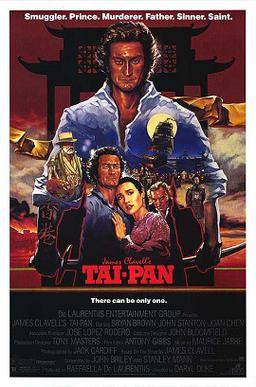
Tai-Pan is a 1986 adventure drama film directed by Daryl Duke, loosely based on James Clavell's 1966 novel of the same name. While many of the same characters and plot twists are maintained, a few smaller occurrences are left out. Filmed under communist Chinese censorship, some portions of Clavell's story were considered too offensive to be filmed as written and considerable changes were made.

King Kong Lives is a 1986 American monster adventure film directed by John Guillermin. Produced by the De Laurentiis Entertainment Group and featuring special effects by Carlo Rambaldi, the film stars Linda Hamilton and Brian Kerwin.

Pirates is a 1986 adventure comedy film written by Gérard Brach, John Brownjohn, and Roman Polanski and directed by Polanski. It was inspired by Polanski's love of classic pirate films, as well as Disneyland's Pirates of the Caribbean attraction. Polanski began planning the film in 1976 as a follow-up to the iconic Chinatown, but production was delayed several times due to lack of funding and Polanski's fleeing the United States to avoid sentencing for his confessed rape of a minor.

Peter Collinson was a British film director probably best remembered for directing The Italian Job (1969).

Texasville is a 1990 American drama film written and directed by Peter Bogdanovich. Based on the 1987 novel Texasville by Larry McMurtry, it is a sequel to The Last Picture Show (1971), and features Jeff Bridges, Cybill Shepherd, Cloris Leachman, Timothy Bottoms, Randy Quaid, and Eileen Brennan reprising their roles from the original film.

Lorenzo Elliott Semple III, known professionally as Lorenzo Semple Jr., was an American writer. He is best known for his work on the television series Batman, as well as political thriller films The Parallax View (1974) and Three Days of the Condor (1975).
De Laurentiis Entertainment Group (DEG) was an entertainment production company and distribution studio founded by Italian producer Dino De Laurentiis. The company is notable for producing Manhunter, Blue Velvet, the horror films Near Dark and Evil Dead II, King Kong Lives, and Bill & Ted's Excellent Adventure, as well as distributing The Transformers: The Movie.
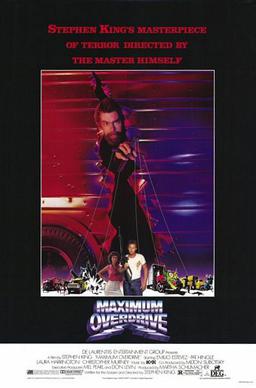
Maximum Overdrive is a 1986 American horror film written and directed by Stephen King. The film stars Emilio Estevez, Pat Hingle, Laura Harrington, and Yeardley Smith. The screenplay was inspired by and loosely based on King's short story "Trucks", which was included in the author's first collection of short stories, Night Shift, and follows the events after all machines become sentient when Earth crosses the tail of a comet, initiating a world-wide killing spree.
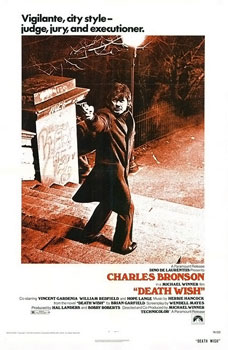
Death Wish is a 1974 American vigilante action-thriller film loosely based on the 1972 novel of the same title by Brian Garfield. Directed by Michael Winner, the film stars Charles Bronson as Paul Kersey, an architect who becomes a vigilante after his wife is murdered and daughter molested during a home invasion. It was the first film in the Death Wish film series. It was followed eight years later with Death Wish II and other similar films.
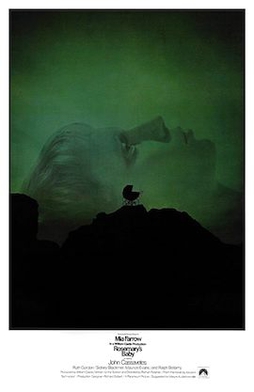
Rosemary's Baby is a 1968 American psychological horror film written and directed by Roman Polanski, based on Ira Levin's 1967 novel of the same name. The film stars Mia Farrow as a newlywed living in Manhattan who becomes pregnant, but soon begins to suspect that her neighbors are members of a Satanic cult who are grooming her in order to use her baby for their rituals. The film's supporting cast includes John Cassavetes, Ruth Gordon, Sidney Blackmer, Maurice Evans, Ralph Bellamy, Patsy Kelly, Angela Dorian, and Charles Grodin in his feature film debut.
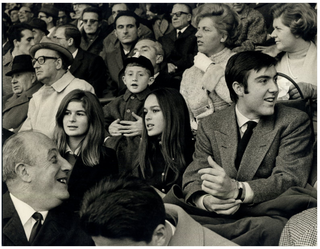
Raffaella De Laurentiis is an Italian film producer. Films that she has produced include Conan the Barbarian, Conan the Destroyer, Dune, Prancer, Dragon: The Bruce Lee Story, all films in the Dragonheart series, The Forbidden Kingdom and Kull the Conqueror.
Steve Carver was an American film director, producer, and photographer.

















